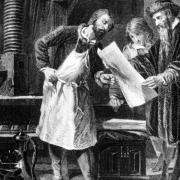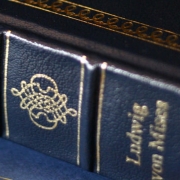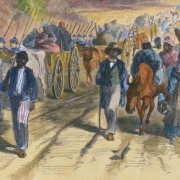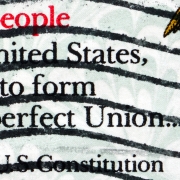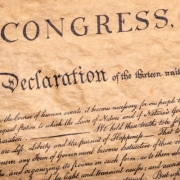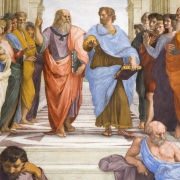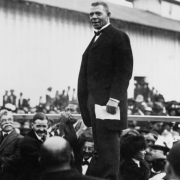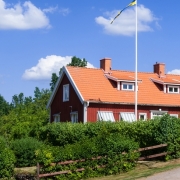The Medieval Inventor and Entrepreneur Who Sparked the Motor of the World
In Medieval Europe, economic mobility was determined by heredity, and since no one chooses their parents, opportunities were limited and pathways for improving one’s lot in life were pre-determined. The feudal system favored the nobility who extracted rents and taxes from the peasants and craftsmen. To limit the abuse and keep more of what they earned, merchants and craftsmen formed guilds, meaning labor unions, to negotiate prices, manage quality, and enforce rules of conduct among guild members.
The only language used for communication across Europe was Latin, and all printed material was manufactured by hand, so illiteracy was nearly everyone’s lot in life. The most literate were the monks who transcribed Bibles. Such was the power of the Church, which was safeguarded by illiteracy, until the year 1522. Over a two year period, 300,000 printed copies of Martin Luther’s 95 Theses were distributed throughout Germany and Europe. Luther’s goal was to kneecap the power of church leaders in their selling of indulgences, which they did in order to enrich themselves further. This was the first shot fired in the Protestant Reformation, and the first widespread distribution of mass produced pamphlets and ideas. And the gun that fired the shot was the recently developed printing press, the one created by the entrepreneur, inventor, and Poetic Justice Warrior Johannes Gutenberg.
The Invention That Changed Everything
While its not clear when Gutenberg came up with the idea for mass printing using moveable type, most likely it was around the year 1440. At the same time, it is believed that Dutchman Laurens Jansz Koster also built a printing press. While it is not rare that two independent minds come up with the same groundbreaking discovery simultaneously, the preponderance of evidence suggests the honor rightfully belongs to Gutenberg.
While the records are sparse, it seems Gutenberg was testing prototype presses while living in Strasbourg, and then in Mainz, while he was experimenting with copper engraved printing. In 1448 Gutenberg took out a loan, presumably to begin construction of a fully working press with all the necessary tools. In 1450, he took out another loan from a wealthy investor, Johann Fust, who along with his son in law Peter Schoffer, joined Gutenberg’s printing enterprise. It makes sense that Schoffer, who had experience as a scribe, created the first typefaces.
In 1452, after taking out a third loan, production began on Gutenberg’s Bible project, and in 1455 they printed 180 copies of the infamous 42 line Gutenberg Bible. During this period Gutenberg accepted commissions for much more profitable printing projects, and as poetic justice would have it, the Church ordered thousands of indulgences to bestow upon their wealthy sinners, er, generous donors.
The Modern Period
The Gutenberg press is a singularity in human history, which means dramatic and irreversible change, and ushered in the modern era. Besides the Reformation, it included the grand achievements of the Renaissance and the Age of Discovery. But at the personal level, it meant growing literacy and the rise of vernacular language, meaning that people could read and learn in the language of their local population. This led to new cultural cohesion among people of the same language and borders, and the emergence of the middle class.
The late modern period was also one of grand achievements. It was the Age of Reason which inspired the Shot Heard Round the World – the American Revolution – and the Industrial Revolution. It was the dawning of the knowledge economy. Literacy soared, ideas and information were mass distributed, and the premodern hierarchies of nobility, church, and guilds were leveled. The power of the human mind was unleashed for the first time in history. The difference between Modernism and the Classicism of ancient Greece and Rome is that they didn’t share our reverence for natural law and natural rights.
What is essential to understand is that in the millennia that preceded the knowledge economy, human life routinely meant disease and despair, only to be interrupted by horrid cruelty. Human life was cheap. As historian Jay Winik explains in his book The Great Upheaval:
Torture was universally employed for all manner of crimes. Rarely was there mercy. One might be hanged, drawn, and quartered. Ordinary criminals and political dissidents alike were routinely beheaded, burned, or broken alive on a wheel. Counterfeiters were punished by pouring molten metal down their throats.
This did not end until mass literacy begat the knowledge economy, the Age of Reason, individualism, the consent of the governed, capitalism, and the Industrial Revolution. Roughly in that order. The Industrial Revolution was central to the end of slavery in the Western world, and unimaginable global prosperity.
The Knowledge Problem
Johannes Gutenberg was patient and peaceful, and had an unusually low time preference, meaning a long-term vision, but not even he could have predicted the amazing consequences of two phenomena: the mass dispersion of all human knowledge, and the massive increase in all human knowledge. As economist Friedrich Hayek explained, “The mind cannot foresee its own advance.”
However, Gutenberg did solve the knowledge problem. Like the creation of money was the catalyst for humanity to escape the tribal, hunter-gatherer mode of living, and provided the tool for mutual, peaceful exchange, the creation of the printing press was the catalyst for organically derived knowledge at the local level, and the universality of knowledge for individual self-creation.
Hayek described the impossibility of any group of people to possess sufficient knowledge for managing human resources more efficiently and peacefully than free markets. In the most cited article in the second half of the 20th century, The Use of Knowledge in Society:
The peculiar character of the problem of a rational economic order is determined precisely by the fact that the knowledge of the circumstances of which we must make use never exists in concentrated or integrated form but solely as the dispersed bits of incomplete and frequently contradictory knowledge which all the separate individuals possess.
One of the greatest achievements of Gutenberg’s ingenuity was that economic mobility was liberalized. Anyone engaged in self-creation, who live lives of reason, purpose, and pride, can work their way into any economic strata they aspire to. Such is the legacy of Poetic Justice Warrior Johannes Gutenberg.
